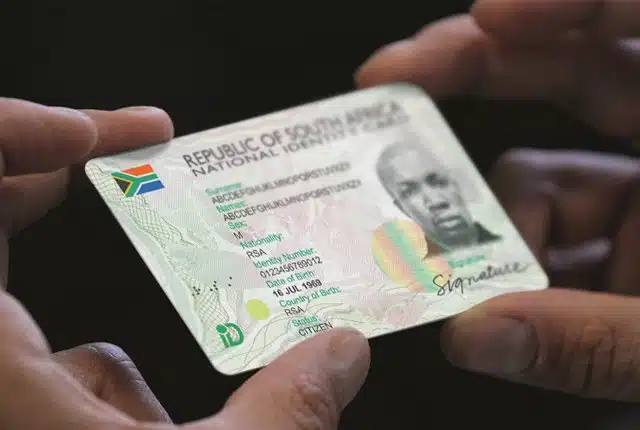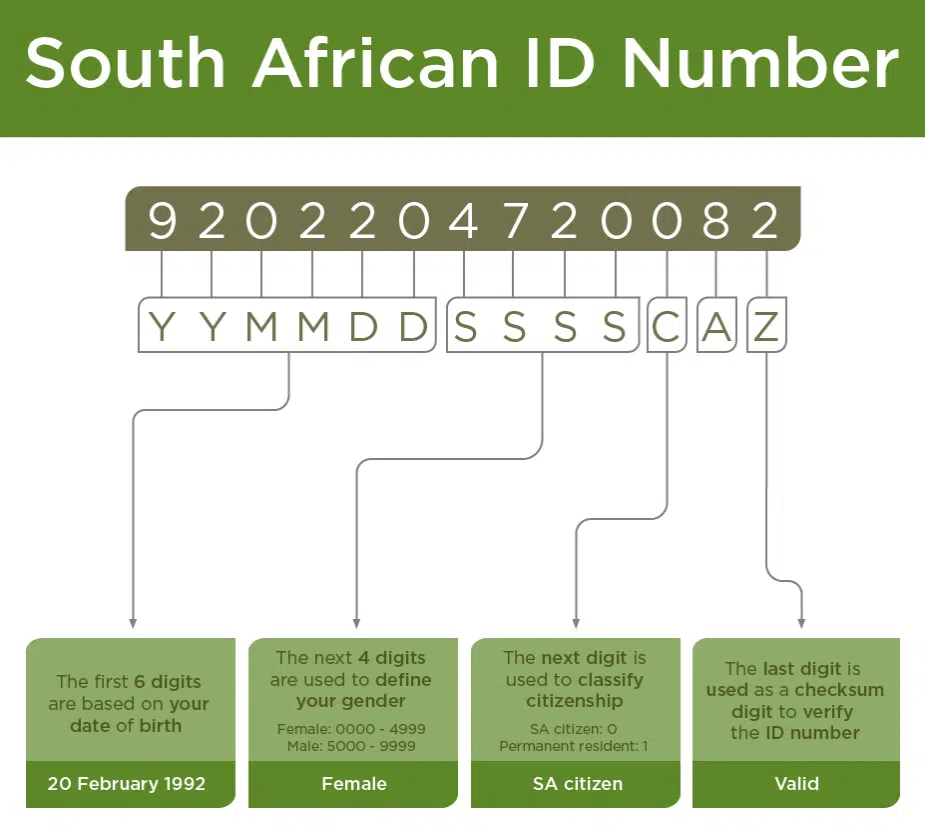
New ID system planned for South Africa
The Department of House Affairs (DHA) is dealing with modifications to South Africa’s ID system to much better show non-binary, intersex and trans individuals in the nation.
In a discussion on Thursday (4 November), the department’s primary info officer, Sihle Mthiyane, stated that this would consist of proposed modifications to ID numbers in South Africa, and recommendations to an individual’s gender.
Under the present system, a South African ID number is a 13-digit number specified by the following format: YYMMDDSSSSCAZ.
- The very first 6 digits (YYMMDD) are based upon your date of birth. 20 February 1992 is shown as 920220.
- The next 4 digits (SSSS) are utilized to specify your gender. Women are appointed numbers in the variety 0000-4999 and males from 5000-9999.
- The next digit (C) reveals if you’re an SA resident status, with 0 signifying that you were born a South African resident and one signifying that you’re an irreversible homeowner.
- The next digit (A) was utilized up until the late 1980s to suggest an individual’s race. This has actually been removed and old ID numbers were reissued to eliminate this.
- The last digit (Z) is a checksum utilized to examine that the number series is precise utilizing the Luhn algorithm’s set formula.

< img src="https://thepanda.co.za/wp-content/uploads/2021/11/new-id-system-planned-for-south-africa_6183d520e5b67.png.webp" alt ="" width="925" height="829" data-aspectratio =" 925/829 "data-srcset =" https://businesstech.co.za/news/wp-content/uploads/2021/11/SA-ID.png 925w, https://businesstech.co.za/news/wp-content/uploads/2021/11/SA-ID-300x269.png 300w, https://businesstech.co.za/news/wp-content/uploads/2021/11/SA-ID-768x688.png 768w"/ > While it was very important to keep particular parts of this system in location– especially those associating with residency, age and security– Mthiyane stated that the department was taking a look at propositions to alter the ID format around gender.
” The numbers on the ID are binary in nature, presuming South Africans are either male or woman. Which is unreasonable, exclusionary and unconstitutional,” he stated. “We held a discussion with the LGBTQIA+ neighborhood, who encouraged that the future of ID numbers must not be restricting.”
Mthiyane stated that the proposition might likewise see a gender-neutral ID number presented which was not male or female. This might likewise be offered at birth to prevent concerns associating with intersex individuals, he stated.
Another alternative might see a random distinct identity number presented that is not connected to or based on an individual’s sex/gender, date of birth, birthplace or any other marker.
He warned that this was not always an over night modification and would need changes to existing legislation, consisting of the Identification Act 68 of 1997 prior to being presented as its own policy.
Other proposed modifications
The department very first mooted modifications to South Africa’s ID numbers as part of a draft identity management policy released for public remark in January 2021.
Mthiyane stated that the department got more than 1,000 submissions around its propositions, with 400 submissions concentrating on the ID numbers alone.
A few of the essential propositions in the draft identity management policy consist of:
- Records of individuals throughout their life expectancy— Every birth that occurs in the nation, regardless of the status of the moms and dads, need to be signed up. If innovation and medical conventions permit, the biometrics of kids should be caught at birth. Where difficult, the biometrics of a moms and dad need to be connected to the birth certificate of a kid.
- ID numbers based upon moms and dads— The identity variety of a kid need to be processed based upon biographic details and connected to their moms and dads’ identity numbers and mom’s biometric information.
- Re-registration— When possible, the biometrics of a kid need to be gathered at birth. A facial picture needs to be considered manual recognition when required. Kids should be reregistered when they reach age 5 with 10 finger prints and iris and facial pictures. A mix of various biometric information for kids need to be thought about with choices such as the picture of the ear.



